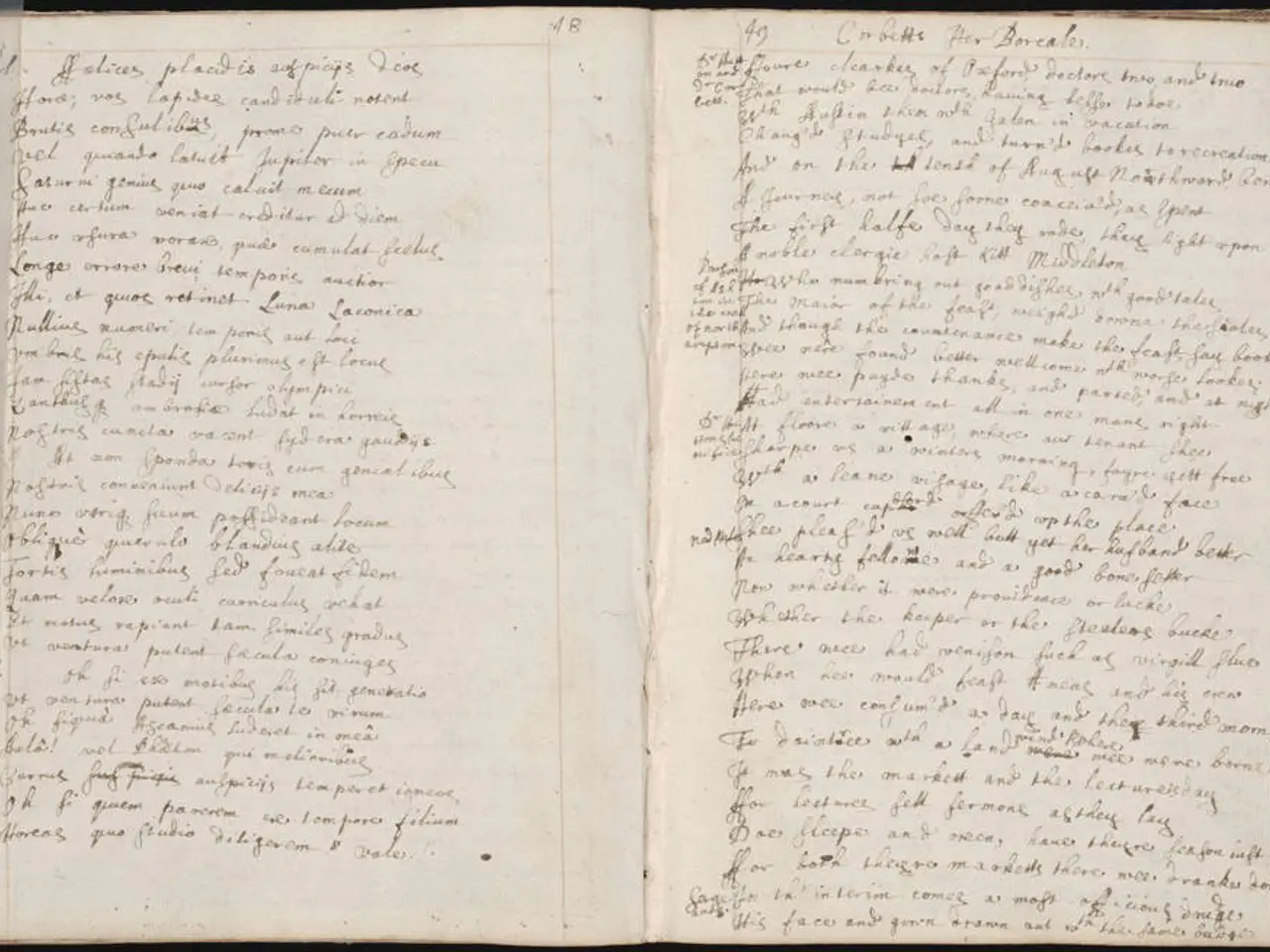Exploring Peaks and Valleys in Screenwriting Across Nine Key Genres
In the world of screenwriting, crafting captivating stories involves understanding and mastering the unique elements of various genres. Here's a guide to some popular genres and their key characteristics.
Drama
Deep character development is essential, with meaningful arcs that reflect real human emotions and conflicts. The Bookend Technique, which mirrors early and late scenes to show transformation, creates emotional resonance and closure for audiences. Films like The Shape of Water use layered narratives to reveal complex societal themes through character-driven stories.
Comedy
Comedy thrives on distinct, memorable personas with clear intentions and comedic flaws. Improvisation techniques such as status play add tension and humor by manipulating social dynamics between characters. Timing and pacing are crucial to maximize comedic impact.
Thriller
Building suspense and tension gradually, combined with shocks at key moments, sustains audience engagement and surprise. Employ unreliable narrators or ambiguous clues to deepen mystery and provoke viewer speculation. Narrative layering, like frame narratives, can enhance tension by providing alternate viewpoints or hidden information.
Sci-Fi
World-building and emotional stakes in characters’ arcs, often combining the fantastic with relatable human dilemmas, are crucial. Versatility in storytelling styles, including non-linear or multi-layered narratives, helps explore complex themes. Clear outlines with obstacles tied to speculative elements can structure these scripts efficiently.
Horror
Creating dread through tension and fear involves techniques such as minimizing monster visibility and balancing slow buildup with chilling shocks. Sound and silence play critical roles in building atmosphere. Strong flawed characters fuel empathy and heighten the impact of horror.
Action
Action screenplays are engaging through their dynamic pace and spectacular scenes. Characters often have strong motivations and status-driven confrontations. Employ active, physical descriptions and tight scene layering for pace. Character arcs should reflect growth through overcoming physical and emotional challenges.
Romance
Build emotional connection through character-driven storytelling and nuanced relationship development. The Bookend Technique can bracket protagonists’ journeys, showing their growth in love or self-understanding. Layered narratives invite reflection on themes like acceptance and societal pressures.
Fantasy
Fantasy stories resonate through their human element, the feelings, challenges, and triumphs we recognize and relate to. Combine imaginative world-building with quest-driven plots and character evolution. Frame narratives help explore multiple layers of lore or prophecy, increasing thematic depth.
Documentary
Though more factual, documentaries benefit from narrative structures such as framing devices to provide context and emotional arcs within real events. Storytelling focuses on revealing truths and engaging audiences intellectually and emotionally by unfolding layered stories.
Cross-genre
Blend elements (e.g., thriller-horror or sci-fi-romance) by balancing the conventions and tones from multiple genres. Tools like the Bookend Technique and frame narrative can unify diverse storylines and thematic threads. Character-driven approaches ensure emotional coherence despite genre mixing.
In all genres, developing well-rounded characters whose wants and obstacles drive the story is essential. Start with an outline combining these elements, then draft with awareness of genre-specific pacing, tension, and tone. By integrating these actionable techniques and studying films like Pulp Fiction and Hereditary, writers can craft enduring, compelling narratives tailored to their genre’s strengths.
In today's screenwriting landscape, cross-genre appeal is essential, opening opportunities for greater collaboration and production success. Every scene should serve a purpose, keeping the narrative cohesive and focused. Present facts engagingly by weaving them into a narrative with a clear arc. Character-driven action sequences add depth and make the action impactful. Crafting scripts with cross-genre appeal ensures your story remains relatable and accessible.
- A screenwriter, aiming to excel in the educational and self-development sphere, should delve into understanding the unique aspects of cross-genre screenwriting, blending elements from various genres like thriller-horror or sci-fi-romance, while maintaining a cohesive narrative using techniques such as the Bookend Technique and frame narrative.
- To enhance lifestyle entertainment, a screenwriter can focus on creating thrilling action sequences that not only engage audiences but also reveal underlying character development and thematic depth, much like the dynamic action in films like Pulp Fiction.
- To tackle general news reporting in documentaries, one may employ narrative structures like framing devices, allowing the presentation of facts in a captivating manner while providing context and emotional arcs within real events, akin to engaging documentaries such as Hereditary.




